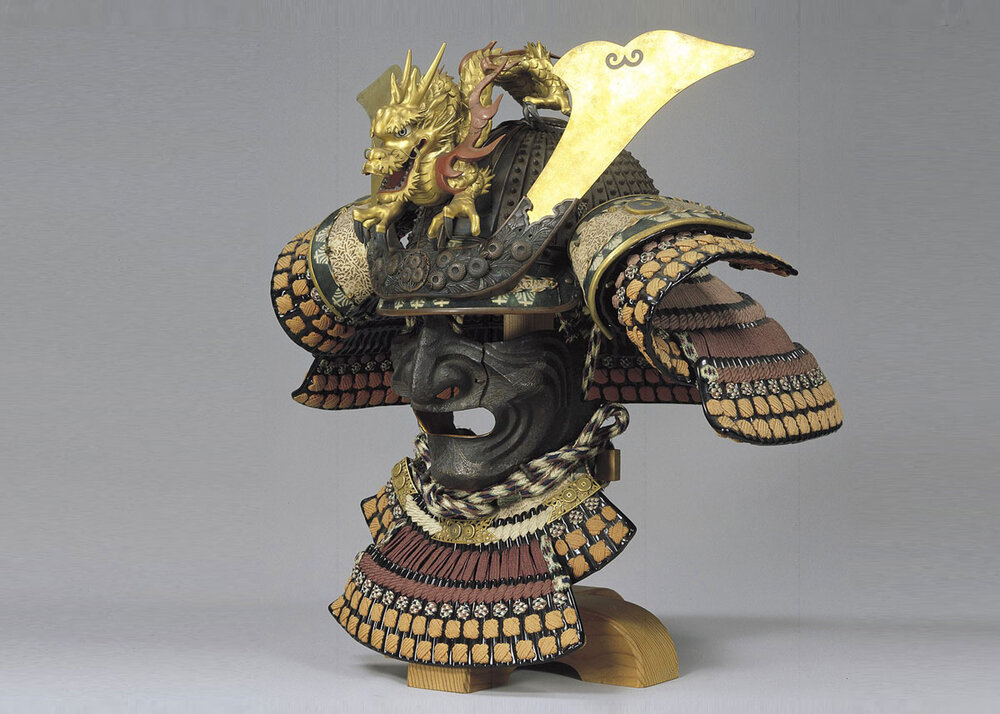The Ashmolean Museum of Art and Archaeology Online Visit
CEREMONIAL SUIT OF ARMOUR FOR SAMURAI,1600-1868
Given to Magdalen College by Prince Chichibu (1902–53) and is on long-term loan to the Ashmolean Museum, Oxford, England
Hello everyone this is my blog on The Ashmolean Museum of Art and Archaeology. The artifact that I chose was a ceremonial suit of armor used for samurai.
I just finished eating dinner and saw this assignment was due the next day so I started to look at some museums to chooser an artifact from. The first museum I chose was the Ashmolean Museum. At first I was just trying to complete the assignment as fast as possible but as I started to look more into their online collection of Eastern historical artifacts. The amount of artifacts they had made me really interested in what this specific museum had to offer. They have Indian, Chinese, and Japanese artifacts. I briefly go over each section they had but the area that me the most intrigued was Japan. While India and China are beautiful places, my interest in Japan greatly outweighs my interest in the others.
As I clicked on the Japanese collection several artifacts popped up from calligraphies, to accessories, to art, and to even sets of armors. The artifact that intrigued me the most was an armor set. The name of the artifact is called The Ceremonial Suit for Samurai. I decided to research more in depth on this really cool piece of armor. The Ceremonial suit for Samurai were used by Samurai members who military nobility and apart of the officer caste. This specific armor was made during the Edo period(1600–1868), which was considered the peaceful era of the samurai, and used only during ceremonies. During these ceremonies this armor was worn to show off the rank and wealth of the samurai members. Depending on the rank and wealth the ceremonial suit would change. For example the two antler like objects coming out of the helmet represented a high rank in the military such as a general. These pieces of armor were also extremely light and were not suited for heavy warfare as the majority of the accessories on the armor was meant for decorations and to represent the power of the user.
The Ceremonial Suit for Samurai had no particular creator and was made by several different craftsmen, including blacksmiths and lacquerers, weavers and leatherworkers. The body armor and skirt are made up of small plates of lacquered metal. These plates are laced together with silk cords that are dyed different colors to form different patterns which gave each piece of armor its own individuality and also added on to the decoration. The helmet consisted of 62 iron plates riveted together which can even be inscribed to 1560. Because these armors were created during the Edo period, the functionality of these armor were low as this period was the most peaceful time for the samurai. The armor created were worn to represent power and status in Japan. Accessories such as the horns on top of the helmet and the animals on top too were all made to represent the power and status of the wearer. Such beautiful and complex designed armor were all designed during a time of piece and my theme is perfectly displayed in this armor as well. Their technological advances allowed them to create complex designs for armor and the accessories to these armors but without this time of piece it would have never been possible
Works Cited
"The Ceremonial Suit of Armor, N.d." Ashmolean Museum,
https://www.ashmolean.org/ceremonial-suit-armour-samurai
"Perceptions of Armor during the Edo Period" by Takaaki Suga
Sandrey, Diccon. “Samurai Armor: 6 Essential Parts & Uses.” Japan Objects, Japan Objects, 15 Oct. 2021, https://japanobjects.com/features/samurai-armor.




Comments
Post a Comment